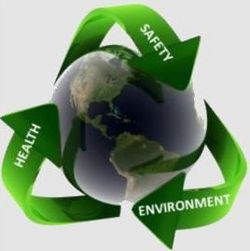QUENSH
(→Management of safety and health: OHSAS 18001) |
|||
| (5 intermediate revisions by one user not shown) | |||
| Line 1: | Line 1: | ||
| + | ''Developed by Mathias Jun Nielsen'' | ||
| + | |||
| + | |||
[[File:QUENSH_WORLD.jpg|250px|thumb|border|right|QUENSH is based off of quality, environment, safety and health.]] | [[File:QUENSH_WORLD.jpg|250px|thumb|border|right|QUENSH is based off of quality, environment, safety and health.]] | ||
| Line 231: | Line 234: | ||
* Special dangerous risks | * Special dangerous risks | ||
| − | == Limitations of QUENSH and the standards == | + | == Limitations and critique of QUENSH and the standards == |
Since the usage of ISOs has been more widely accepted on a global scale, some unavoidable debate regarding it has been made. The arguments against the criticism are often that the critics does not know how to set up a proper management system and make it run like a "well oiled" quality measurement system benefiting an organization for a long time.<ref name=quora> Robert Jasper. ''What are some common criticisms of ISO 9001?'' Quora forums. https://www.quora.com/What-are-some-common-criticisms-of-ISO-9001. Retrieved 12 June 2017 </ref> Furthermore, some will argue that the relatively high compliance cost of the organizations will be earned back through positive effects of the systems with a longer time span in focus. | Since the usage of ISOs has been more widely accepted on a global scale, some unavoidable debate regarding it has been made. The arguments against the criticism are often that the critics does not know how to set up a proper management system and make it run like a "well oiled" quality measurement system benefiting an organization for a long time.<ref name=quora> Robert Jasper. ''What are some common criticisms of ISO 9001?'' Quora forums. https://www.quora.com/What-are-some-common-criticisms-of-ISO-9001. Retrieved 12 June 2017 </ref> Furthermore, some will argue that the relatively high compliance cost of the organizations will be earned back through positive effects of the systems with a longer time span in focus. | ||
| Line 250: | Line 253: | ||
:* first-order information loops around static standards, and | :* first-order information loops around static standards, and | ||
:* systems that are operationally orientated; meaning that they do not take factors such as customer satisfaction into account. | :* systems that are operationally orientated; meaning that they do not take factors such as customer satisfaction into account. | ||
| + | |||
| + | An effort of trying to take the above two limitations into account in a certain total quality management system may be made. However, the nature of the management systems being as general and objective as possible may lead to the choice of e.g. making separate customer satisfaction measurements all depending on the field of work. | ||
== References == | == References == | ||
| Line 284: | Line 289: | ||
|- | |- | ||
| Wahid, R. & Corner, J. || Critical succes factors and problems in ISO 9000 maintenance || 2009 || International Journal of Quality & Reliability Management || - || - || Study and research on some of the most critical succes factors and problems in ISO 9000 maintenance || http://www.emeraldinsight.com/doi/abs/10.1108/02656710910995073?journalCode=ijqrm | | Wahid, R. & Corner, J. || Critical succes factors and problems in ISO 9000 maintenance || 2009 || International Journal of Quality & Reliability Management || - || - || Study and research on some of the most critical succes factors and problems in ISO 9000 maintenance || http://www.emeraldinsight.com/doi/abs/10.1108/02656710910995073?journalCode=ijqrm | ||
| + | |- | ||
| + | | Health and Safety Executive (HSE) || Health and safety in construction sector in Great Britain, 2014/2015 || 2015 || Data document || - || - || Detailed description of health and safety data (including accidents) for the construction sector in the Great Britain in the years 2014/2015 || http://www.hse.gov.uk/statistics/industry/construction/index.htm | ||
|} | |} | ||
Latest revision as of 13:35, 19 November 2018
Developed by Mathias Jun Nielsen
QUENSH (QUality, ENvironment, Safety and Health) systems are an extension of the formal QMS (Quality Management Systems, see also Total Quality Management (TQM)) in the means of health, safety and environmental conformance. The awareness of these issues has been increasingly growing throughout the past couple of decades, making the joint integration of all ISO 9001, ISO 14001 and OHSAS 18001 management systems (also known as QUENSH).
The increasing demand for sustainable solutions are not less urgent in construction, where a common understanding of the gains of safer and more environmentally friendly concepts are to help change the mindset of the industry. The concept of sustainability can be and is often described as:[1]
“The ability to continue at a particular level for a period of time.”
The concept of sustainability is in the case of the construction industry often thought of as having a sustainable work flow. A continuing increasing movement is however about to change the meaning. The extended use of the concept of sustainability have in the last couple of decades been used in many different terms; environment, biology, geology, economy, etc. And now we see it making its entry in the rather conservative construction industry as well.
This article introduces the ISO and OHSAS standards behind QUENSH. Furthermore, there will be mentioning of some of the common ways to integrate these in projects. Finally, a discussion on some typical points of critique and misunderstandings are made.
Contents |
[edit] Normal QMS vs. QUENSH
Formal quality management systems (QMS) can be based off of four basic approaches:[2]
- Inspection, or the reliance upon physically checking that work has been completed satisfactorily;
- Quality control (QC), or the reliance on management control techniques to achieve high levels of quality;
- Quality assurance (QA), or the use of externally accredited procedures to ensure that quality management practices are rigorously followed;
- Total quality management (TQM), or the motivation of continuous process improvement to achieve higher and higher levels of conformance to intention.
It is important to note that the formal QMS and QUENSH does not contradict one another, but that QUENSH should be seen as a further development in which the awareness of environment, safety and health is incorporated directly into the quality assessment agenda.
[edit] Standards behind QUENSH
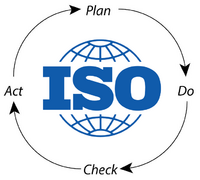
A common structure of standards for management systems, drawn up in 2012 and applicable to the new International Organization for Standardization (ISO) standards and future revisions of existing ISO standards. This structure leads to the concept of High Level Structures (HLS), in which certain aspects are met:[3]
- Terminology, text, definitions, titles and the common sequence of the same
- Greater importance given the concept of risk
In particular, all management system standards present:
- A structure made up of 10 principal points
- Within each point there are some paragraphs and content, inclusion of which in all the standards is obligatory
- Where necessary, the individual standards may add specific requirements in relation to their fields of application
Furthermore, and a key element of QUENSH, is the health and safety elements which may consist of the Occupational Health and Safety Assessment (OHSAS) series. This standard was adopted as a British standard by the British Standard Institution (BSI) back in 2008.[4]
All of the newest ISO standards including ISO 9001 and ISO 14001 follows the Plan-Do-Check-Act (PDCA) cycle.[5]
[edit] Management of quality: ISO 9001:2015
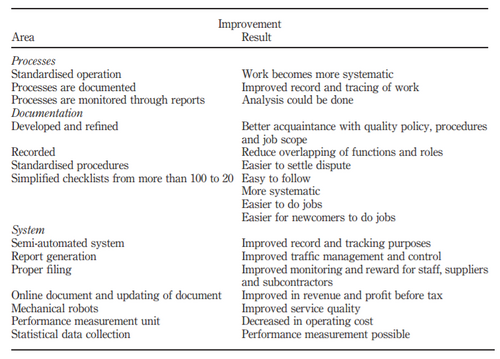
The ISO 9000 series are based on seven Quality Management Principles (QMP).[7] These are:
- QMP 1: Customer focus
- QMP 2: Leadership
- QMP 3: Engagement of people
- QMP 4: Process approach
- QMP 5: Improvement
- QMP 6: Evidence-base decision making
- QMP 7: Relationship management
The ISO-series are being continually revised by standing technical committees and advisory groups, who receive feedback from those professionals who are implementing the standards. Different versions have been made in 1987, 1994, 2000, 2008 and latest 2015, in which the content is:
- Section 1: Scope
- Section 2: Normative references
- Section 3: Terms and definitions
- Section 4: Context of the organization
- Section 5: Leadership
- Section 6: Planning
- Section 7: Support
- Section 8: Operation
- Section 9: Performance evaluation
- Section 10: Improvement
Furthermore, the latest 2015 version is less prescriptive than its predecessors and focuses on performance, which was achieved by combining the process approach with risk-based thinking, and employing the Plan-Do-Check-Act (PDCA) cycle at all levels in the organization.[8]
[edit] Avoidance of environmental risks: ISO 14001
The ISO 14001 standard, which arguably is the most notable standard to the ISO 14000 series, sets out the criteria for an Environmental Management System (EMS). The ISO 14001 standard shares many common traits with its predecessor, ISO 9000. Just like ISO 9000 the ISO 14000 acts both as an internal management tool and as a way of demonstrating a company’s environmental commitment to its stakeholders including customers and clients.[9] The standard, of which ISO 14001:2015 is the newest, is meant for to help organizations improve resource efficiency, reduce waste and reduce drive down cost.
Some environmental goals, possibly based on both environmental or economic incentives, can be:[10]
- Cleaner technology
- Sustainable construction and construction environmental plans
- Emergency preparedness and response plans
- Green procurement
- Pollution risk assessments including drainage surveys, provision of spill containment and spill response equipment and biological cleaning products
- Producer responsibility obligations for products and waste
- Premises management including facility and energy reviews
- Waste management and minimization
- Water and waste water management
Some of the main ideas behind the usage of QUENSH in terms of environment and the primary idea of the usage of ISO14000 is in the end to helps companies and organizations with the following, in addition to the potential of creating improved public relations and reduce production costs:[10]
- Optimizing the use of raw materials, transport, water and energy
- Rationalizing and recycling
- Reducing the volume and toxicity of waste, used water and air emissions.
[edit] Management of safety and health: OHSAS 18001
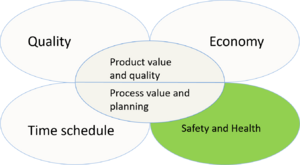
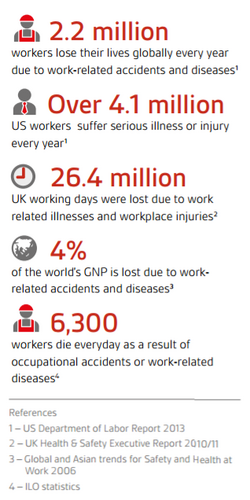
The OHSAS 18000 series consists of two primary specifications; OHSAS 18001 and 18002, which provides requirements for an Occupational Safety and Health (OHS) management system and implementation guidelines, respectively.
The idea of the OHSAS is to help organizations to:
- Identify and control health and safety risks
- Reduce the potential for accidents
- Aid legal compliance
- Improve overall performance
A new international standard called ISO 45001 was meant to come out in 2016, ensuring a better link between all of the international standards. This new international standard was supposed to replace the current OHSAS 18001.[4] The publication date however has due to down voted drafts been postponed to 2018.[12] The reasoning for this delay may be many, however a big concern for many global organizations in regards to developing such an international standard has been how it will affect and work with the current local regulations.[4]
When speaking of safety and health in construction, the following points are typical risks for accident:[11]
- Fall from heights and on the same level
- Contact with falling or flying objects
- Striking by moving objects, hit by or trapped between objects
- Buried by bulk mass
- Violence from either humans or animals
- Risks from the use of machinery or hand tools
- Trafficable risks
- Electrical risks in general
- Risks from (relatively) hot or cold elements
- Hazardous materials
- Heavy lifts and loads
- Risk for fire
- Risk for lack of oxygen
- Risk for explosions
When speaking about safety and health, the following points involves the typical risks of occupational diseases:[11]
- Chemicals and organic solvents
- Dust, smoke and steam
- Isolation materials
- Polluted soil, water and air
- Noise and vibration
- Weather conditions (especially at wintertime)
- Micro organisms
- Monotonous movement
- Heavy lifting and loads
- Inappropriate movements
- Heavy pull and push
- Heavy work load in general
Furthermore, the typical psychosocial risks associated with the construction industry involves:[11]
- Stress
- Inappropriate demands
- Harassment
- Low influence in own work situation
- Unsafe employment
- Low self-esteem
- Low predictability in own work
[edit] The appliance of QUENSH
Historically, many organizations start with the Quality Management System (QMS) ISO 9001, then add the environment management requirements from ISO 14001. Among other changes the OHSAS 18001 was updated back in July 2007 in order to be more easily aligned with the structures of the ISO 9000 and 14000 series. The change also stated greater emphasis on the “health” component of “health and safety”.[13]
Furthermore, the Plan-Do-Check-Act (PDCA) cycle model can be used by a wide range of organizations - from manufacturing facilities to service industries to government agencies. The newest changes of the ISO standards also make it more possible for third party companies to sell/provide services for businesses wanting a greener or more sustainable profile.
[edit] Quality assurance
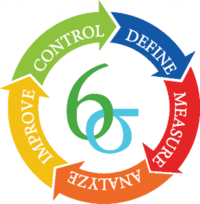
The quality control (QC) is the 'part of quality management focused on fulfilling quality requirements' .[2] Many different kind of these tools are available, whereas a few of them are mentioned here:[2]
- Cause and effect diagrams, also known as Ishikawa diagrams or fishbone diagrams
- Performance measurement
- Statistical process control
- Value-stream mapping
The quality assurance (QA) systems specifies procedures for identification of conformance or non-conformance. In other words, the QA systems are here to specify what inspections should take place using which criteria, and which QC tools should be used when. These QA systems are based on three basic types:[2]
- First-party systems, which are the responsibility of the company concerned alone.
- Second-party systems, where suppliers are accredited by buyers using proprietary standards - common in defense procurement and the volume manufacturing sectors.
- Third-party systems, where the QA system is certified by an independent third party.
One of the most widely diffused Project Improvement Projects (PIP) routines can arguably be the six-sigma with the DMAIC cycle at its core.[2]
[edit] Environmental appliance
The applications that an organization may follow can be in the form of guidance and/or instructions. As mentioned, some third-party companies make a living off of guiding existing companies in different industry sectors. The help they provide can e.g. consist of:[10]
- Establishing environmental management systems, certifiable to BS EN ISO14401
- Environmental baseline reviews such as carbon footprint including reduction methods thereof
- Legal compliance and risk assessment
- Training of the organizations employees such as terms of environmental awareness
- Communication strategies and campaigns
Different tools have been made in order to accommodate the desire of more green construction projects. An example of this is the tool called EcoProP developed by VTT Building Technology [14] comprised of several methods or so-called exhibits. An example of this is Exhibit 2: Environmental and Sustainability Issues in Construction, which is an approach and tool that can be used for almost any kind of building. The concept builds upon the environmental burdens during the operation of the building in addition to the traditional project boundaries consisting og cost, time and quality.[14]

[edit] Safety and health assurance
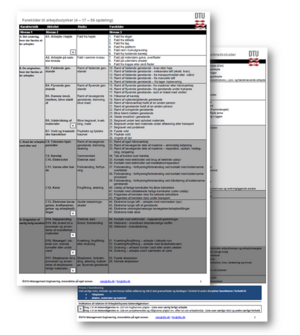
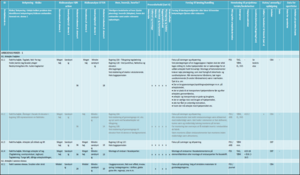
Some general principles for prevention of the risks associated with construction could be as follows:[11]
- Evaluate the risks
- Prevent the risk at the source for the risk
- Adjust the work to human beings, especially the design of the workplace, the choice of equipment and working methods. Be careful to avoid monotonous work and work in fixed rhythm
- Take consideration for the technological development
- Substitute dangerous work, substances and equipment with something less dangerous
- Make plans for safety and health in work as a coherent whole, which include technology, work design, working condition, social relation and risk factors in the working environment
- Make precautions for the collectively prevention instead of individual prevention
- Be sure that all workers have got a proper instruction of safety in their work
In order to ensure a proper safe and healthy working environment the different parties of a construction project have different responsibilities. In Denmark, these responsibilities stem from the working environment law[15], in practice carried out by the Danish Working Environment Authority whom carries out inspections of companies and projects.[16]
The Danish working environment legislation states its objective by:
“The objective is to ensure that the working environment is safe within all enterprises and on all building sites.”
The above legislation objective caved the way for making employer's responsible for setting up preventive actions on all working sites, hereby securing prevention at the workplace by, instructions, supervision, safety equipment and written workplace assessments. But in addition to the mentioned legislation, responsibilities are also required from other parties, in which some examples are:[11]
The client's responsibilities are to coordinate (or acquire a coordinator responsible for) the health and safety needs during both the design and the construction phase. He/she has to ensure that the site is notified to the working authority, when the sites has a certain size.
The designer's responsibilities are to design and describe so that the contractor is able to carry out the work with respect to time, costs and resources. Make instructions that suitable with technical aids can be used when handling heavy loads. Describe risks and other special conditions of the project. Notify the client of his responsibilities.
The entrepreneur's responsibilities may overlap with the employer's responsibilities for own employees and, if the entrepreneur is the main constructor, the safety and health on the site. If that's the case however, he/she also has to include the client's safety coordinator in the planning and organizing of the construction process and the coordination of the process with all involves suppliers. Furthermore, the entrepreneur is obligated to participate in the coordination of the safety and health at the site.
In the matter of safety, the most important job however may arguably be the safety coordinator and his/her responsibilities. This person may also be called the working environment coordinator. These responsibilities include the checking of:
- Order and cleanliness on the building site
- Good access to workplaces
- Handling of various building materials, especially when using cranes
- Maintaining the electricity cables and other installations
- Locations for storage sites and locations for materials
- How waste and rubble are stored and removed
- That enterprises adapt to the actual time to be spent on the various types of work
- Corporation between employers
- Interaction with activities taking place on or close to the site
- Special dangerous risks
[edit] Limitations and critique of QUENSH and the standards
Since the usage of ISOs has been more widely accepted on a global scale, some unavoidable debate regarding it has been made. The arguments against the criticism are often that the critics does not know how to set up a proper management system and make it run like a "well oiled" quality measurement system benefiting an organization for a long time.[17] Furthermore, some will argue that the relatively high compliance cost of the organizations will be earned back through positive effects of the systems with a longer time span in focus.
The criticism that follows the standards are primarily mentioned as:[18] [19]
- The compliance process is costly and time-consuming
- More administration is needed to implement it
- It is mostly relevant and applicable to manufacturing firms despite it striving to be as generic as possible
- It has some mandatory procedures that do not take the context of the organization and their activities into account
- No direct involvement of risk management
- Requirements about outsourced activities are not properly mentioned
- It too often relies on general principles
And as a more general criticism on the concept of international standards are also that organizations acquire it due to a marketplace requirement as opposed to actually understanding it. This may also be a product of the form being valued higher than actual results.[19]
When it comes to inspection, QC and QA - and as such also QUENSH systems - all share two important limitations. They are all:[2]
- first-order information loops around static standards, and
- systems that are operationally orientated; meaning that they do not take factors such as customer satisfaction into account.
An effort of trying to take the above two limitations into account in a certain total quality management system may be made. However, the nature of the management systems being as general and objective as possible may lead to the choice of e.g. making separate customer satisfaction measurements all depending on the field of work.
[edit] References
- ↑ Cambridge Dictionary. Sustainability. http://dictionary.cambridge.org/dictionary/english/sustainability. Retrieved 15 June 2017
- ↑ 2.0 2.1 2.2 2.3 2.4 2.5 Winch, Graham M. (2010). Managing construction projects. Chapter 12.
- ↑ RINA Services. ISO Revision 2015: High Level Structures. http://www.rina.org/en/keytopics/iso-9001-and-iso-14001-revision/high-level-structure. Retrieved 7 June 2017
- ↑ 4.0 4.1 4.2 4.3 British Standard Insitution (BSI) group. Whitepaper. https://www.bsigroup.com/LocalFiles/en-GB/iso-45001/Resources/BSI-ISO45001-Revision-Whitepaper-EN-UK.pdf. Retrieved 8 June 2017
- ↑ Wikipedia. ISO 14000. https://en.wikipedia.org/wiki/ISO_14000. Retrieved 8 June 2017
- ↑ Roslina Ab Wahid, James Corner (2009). Critical success factors and problems in ISO 9000 maintenance. International Journal of Quality & Reliability Management, vol. 26 issue: 9, pp.881-893. https://doi.org/10.1108/02656710910995073. Retrieved 12 June 2017
- ↑ International Standard Organization (ISO). Quality management principles. https://www.iso.org/files/live/sites/isoorg/files/archive/pdf/en/pub100080.pdf. Retrieved 7 June 2017
- ↑ International Standard Organization (ISO). ISO 9001:2015 - Just arrived!. https://www.iso.org/news/2015/09/Ref2002.html. ISO. Retrieved 7 June 2017
- ↑ Boiral, O. (2007). Corporate Greening Through ISO 14001: A Rational Myth?. Organization Science. 18:127. http://pubsonline.informs.org/doi/abs/10.1287/orsc.1060.0224
- ↑ 10.0 10.1 10.2 ecobusinesswm. QUENSH Consultancy. http://www.ecobusinesswm.co.uk/more/quensh-consultancy.aspx. Retrieved 9 June 2017
- ↑ 11.0 11.1 11.2 11.3 11.4 11.5 11.6 11.7 Kirsten Jørgensen. Lecture: Safety management in construction. Lecture for day 4 on the course 42286 at DTU, Kongens Lynbgy, Denmark. Lecture took place on the 7 June 2017
- ↑ Wikipedia. ISO 45001. https://en.wikipedia.org/wiki/ISO_45001. Retrieved 9 June 2017
- ↑ British Standards Institution (BSI). Press release July 2017: Health and safety management systems specification OHSAS 18001 is now a British Standard BS OHSAS 18001:2007. https://www.bsigroup.com/en-GB/about-bsi/media-centre/press-releases/2007/7/Health-and-safety-management-systems-specification-OHSAS-18001-is-now-a-British-Standard-BS-OHSAS-18001-2007/
- ↑ 14.0 14.1 14.2 VTT Building Technology (1998).Well-being through construction in Finland. Retrieved 11 June 2017
- ↑ Arbejdstilsynet. The working environment legislation. http://engelsk.arbejdstilsynet.dk/en/regulations/acts/working-environment-act. Retrieved 15 June 2017
- ↑ Wikipedia. Occupational safety and health. https://en.wikipedia.org/wiki/Occupational_safety_and_health. Retrieved 15 June 2017
- ↑ Robert Jasper. What are some common criticisms of ISO 9001? Quora forums. https://www.quora.com/What-are-some-common-criticisms-of-ISO-9001. Retrieved 12 June 2017
- ↑ isoeasy. Criticisms of ISO 9000. Management Systems Inc forums. https://pdca.wordpress.com/2006/04/22/criticisms-of-iso-9000/. Required 12 June 2017
- ↑ 19.0 19.1 Mark Nolan. What are some common criticisms of ISO 9001? Mark1systems. http://www.mark1systems.com/blog/quality/common-criticisms-iso-9001/. Retrieved 12 June 2017
[edit] Annotated Bibliography
| Author | Title | Date | Category | Chapter | Pages | Brief description | Link |
|---|---|---|---|---|---|---|---|
| Winch, Graham M. | Managing Constructions Projects | 2010 | Book | Chapter 12 | 316-345 | University litterature on management in constructional engineering. The mentioned chapter enlightens the concept of managing conformance and mentions QUENSH as an extension to more fundamental quality management systems. | - |
| International Organization for Standardization (ISO) | ISO 9000 - Quality management | 2015 | Homepage | - | - | Extensive preview of the ISO 9001:2015. | https://www.iso.org/iso-9001-quality-management.html |
| Wikipedia | ISO 9000 | 2017 | Homepage | - | - | Description of the ISO 9000 standards in general. Also contains more a more specific section about the 9001:2015. | https://en.wikipedia.org/wiki/ISO_9000 |
| International Organization for Standardization (ISO) | ISO 14000 familty - Environmental management | 2015 | Homepage | - | - | Extensive preview of the ISO 14001:2015. | https://www.iso.org/iso-14001-environmental-management.html |
| Wikipedia | ISO 14000 | 2017 | Homepage | - | - | Description of the ISO 14000 standards in general. Also contains more a more specific section about the ISO 14001 and EMAS. | https://en.wikipedia.org/wiki/ISO_14000 |
| Wikipedia | OHSAS 18001 | 2017 | Homepage | - | - | Description of the OHSAS 18001. | https://en.wikipedia.org/wiki/OHSAS_18001 |
| Wikipedia | ISO 45001 | 2017 | Homepage | - | - | Description of the new ISO 45001 yet to be released. | https://en.wikipedia.org/wiki/ISO_45001 |
| Houvila, P. & Leionen, J | Environmental management in construction | 2000 | Paper presented at Project Management Institute Annual Seminars & Symposium, Houston, TX | - | - | Presentation and short descriptions of VTT Building Technology's method EcoProP, explaining six exhibits with environmental management in construction in focus. | https://www.pmi.org/learning/library/environmental-management-construction-8923 |
| Wahid, R. & Corner, J. | Critical succes factors and problems in ISO 9000 maintenance | 2009 | International Journal of Quality & Reliability Management | - | - | Study and research on some of the most critical succes factors and problems in ISO 9000 maintenance | http://www.emeraldinsight.com/doi/abs/10.1108/02656710910995073?journalCode=ijqrm |
| Health and Safety Executive (HSE) | Health and safety in construction sector in Great Britain, 2014/2015 | 2015 | Data document | - | - | Detailed description of health and safety data (including accidents) for the construction sector in the Great Britain in the years 2014/2015 | http://www.hse.gov.uk/statistics/industry/construction/index.htm |
